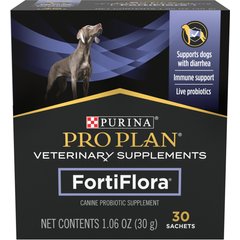Parasitic Infection (Neosporosis) in Dogs
Neospora Caninum Infection in Dogs
Neospora caninum is a parasite similar in form to Toxoplasma gondii. Under microscopic examination, the N. caninum sporozoite (the body of the parasite) closely resembles the T. gondii sporozoite, and the the two diseases share many of the same symptoms. However, the N. caninum infection has a more severe impact on a dog's neurological and muscular system than T. gondii does.
This infection naturally leads to the development of neosporosis, the medical term for a diseased state that has been caused by the death of cells and living tissue (an incident known as necrosis) in response to the invasion of N. caninum. It is associated with tissue damage from the rupture of a cyst and subsequent invasion of tachyzoite microorganisms – the stage at which the sporozoite organism multiplies rapidly in the tissues throughout the body.
The life cycle of the N. caninum parasite is unknown, but it known to be transmissible during fetal development and birth. Puppies are most commonly diagnosed, but hunting dogs are also at increased risk and appear frequently in the medical literature covering this condition.
Symptoms and Types
Signs of neosporosis are similar to the parasitic disease toxoplasmosis, which is caused by the protozoan parasite Toxoplasma gondii. In dogs less than six months of age, symptoms usually include stiffness of the pelvic limbs (back legs), paralysis distinguished by gradual muscle atrophy (in which the muscles seize up and cannot move), progressing to rigid contracting of the limbs.
In older dogs, the central nervous system is more likely to be involved, leading to symptoms such as seizures, tremors, behavioral changes, and blindness. Other symptoms that may develop include weakness of the cervical muscles (near to the neck) and difficulty swallowing, a condition known as dysphagia. These signs develop gradually. The eventual paralysis of the muscles involved in respiration can lead to death. In many cases, the infection spreads throughout the body, affecting most of the organs, including the skin. Dermatitis is another common symptom of neosporosis, particularly in older dogs.
Vet Recommended Health Support
- Purina Pro Plan Veterinary Diets FortiFlora Powder Probiotic Digestive Supplement for Dogs, 30 count$30.99Chewy Price
- VetClassics Pet-A-Lyte Oral Electrolyte Solution Dog & Cat Supplement, 32-oz bottle$17.99Chewy Price
- Nutramax Welactin Omega-3 Liquid Skin & Coat Supplement for Dogs, 16-fl oz$27.99Chewy Price
- Fera Pets USDA Organic Pumpkin Plus Fiber Support for Dogs & Cats, 90 servings$34.95Chewy Price
Causes
Neosporosis is caused by the protozoan Neospora caninum, which invades and inhabits the body of the host animal. Dogs and coyotes are definitive hosts of N. caninum and can pass on infection via the sporulated oocysts (the fertilized ovum of the N. caninum parasite) present in their feces. Ingestion of these oocysts – for example, in contaminated food stuffs – can pass on neosporosis to animals. Additionally, the presence of N. caninum cysts in the tissues of an intermediate host (such as cattle) can lead to the contamination of feeds, leading to infection.
Transmission of N. caninum also may be transplacental, meaning it may be transmitted from mother to child through the placenta while the fetus is still in the womb. This can result in congenital infection (in which the infection is present upon birth). In puppies, N. caninum may form cysts in the developing central nervous system, resulting in neurological abnormalities.
Diagnosis
Your veterinarian will perform a thorough physical exam on your pet, including a complete blood profile, a chemical blood profile, a complete blood count, and a urinalysis. A fecal sample will also be necessary for laboratory analysis. A finding of oocysts in the feces will be definitive for diagnosing neosporosis. Your doctor will also need to perform an analysis of your dog's cerebrospinal fluid (the fluid of the brain and spinal cord) in order to determine the extent of neurological involvement. Changes, such as a slight increase in protein in the cerebrospinal fluid, are indicative of neosporosis. I tissue biopsy may also be used to differentiate N. caninum from T. gondii.
Because there are several conditions that can cause central nervous system dysfunctions, your doctor may also need to rule these out, especially those that have the highest risk for severe complications. Some of the diseases your doctor may want to rule out, depending on the background of symptoms and the environment your dog normally lives in, include rabies, fungal infections, meningitis, and reactions to toxic materials (e.g., lead, pesticides).
Treatment
Certain medications may be given for the treatment of neosporosis, and may stop the progression of the disease and its symptoms. However, prognosis for patients is poor when the disease has reached the point where muscles have begun to contract and progressive paralysis has set in.
Living and Management
Neosporosis must be treated with the appropriate medications, as prescribed by your veterinarian, for an extended period of time. It is important to administer medications properly for the entire recommended time period.
Prevention
Neosporis may be prevented by avoiding contaminated feeds. Other dogs or cattle that may have had contact with an infected animal should be tested for neosporosis and receive treatment as soon as possible, before the parasite has an opportunity to become systemic.




